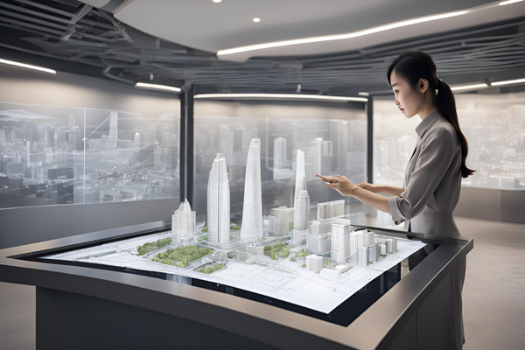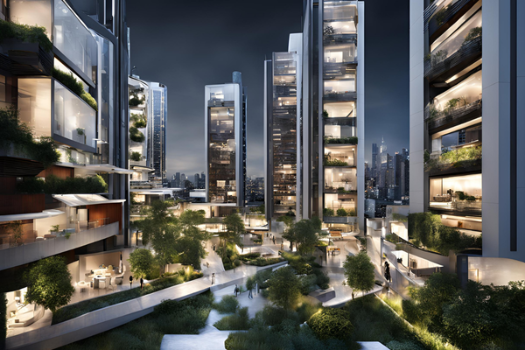
BIM’s Role in Urban Planning for Tomorrow
Introduction
Cities are growing faster than ever. By 2050, most of the world’s population will live in urban areas. This rapid growth brings challenges like overcrowding, resource management, and environmental stress. Sustainable city planning is no longer optional—it’s essential.
Building Information Modeling (BIM) offers a powerful solution. BIM helps planners create smarter, more efficient cities. With its ability to manage data and improve collaboration, it’s a game-changer for urban planning.
In this article, we’ll explore how BIM transforms city planning. We’ll look at its integration into urban projects, the many benefits it brings, and the challenges it faces. Finally, we’ll discuss what the future holds for BIM in shaping the cities of tomorrow.
Understanding BIM in Urban Planning
Building Information Modeling (BIM) is more than just software. It’s a process that creates a digital model of a facility’s physical and functional details. Think of it as a detailed blueprint that updates in real time as the project evolves. This makes it easier to plan, track, and manage every part of construction.

In urban planning, BIM takes on a larger role. It doesn’t stop at individual buildings. Instead, it looks at entire neighborhoods, transportation networks, and public spaces. BIM helps city planners see the big picture while diving into small details. It ensures every part of a project fits together perfectly, supporting smoother workflows and fewer errors.
When combined with Artificial Intelligence (AI) and data analytics, BIM becomes even more powerful. AI can analyze data faster and suggest smarter solutions. For example, it can predict how traffic patterns will change or how resources can be used more efficiently. Together, BIM and AI make urban planning more precise, efficient, and sustainable.
BIM is reshaping how we think about cities. It’s not just about designing buildings—it’s about creating smarter, better-connected communities.
Benefits of BIM in Urban Planning
Enhanced Collaboration
BIM brings everyone to the same table. Architects, engineers, urban planners, and stakeholders can work on a unified platform. This shared space allows for better communication and collaboration. Instead of juggling multiple versions of plans, everyone works on the most up-to-date information. This reduces confusion and speeds up decision-making.
Improved Visualization and Simulation
BIM creates detailed 3D models that go beyond paper plans. These models show how buildings, roads, and public spaces will look and function. Planners can run simulations to test designs before construction begins. For example, they can see how sunlight affects a building or how traffic will flow through an area. This helps stakeholders make better decisions early in the process.

Sustainability and Efficiency
Urban areas demand sustainable solutions, and BIM delivers. By analyzing resource use, BIM helps reduce waste and optimize energy consumption. Planners can design green spaces, efficient water systems, and eco-friendly buildings. This not only benefits the environment but also saves costs in the long run.
Risk Management
Mistakes in urban planning can be costly. BIM minimizes risks by identifying potential issues early. For example, it can flag clashes between utilities or structural elements. This proactive approach saves time, money, and effort during construction.
BIM isn’t just a tool; it’s a strategy for smarter, greener cities. It ensures that every decision leads to better outcomes for both the community and the environment.
Challenges in Implementing BIM for Urban Planning
BIM offers many benefits, but its implementation comes with challenges. One major hurdle is the cost. BIM requires significant investment in technology, software, and training. Many organizations, especially smaller ones, struggle with these upfront expenses. Additionally, using BIM effectively demands skilled professionals, and finding or training such experts can be time-consuming and costly.

Managing large datasets is another challenge. Urban planning involves vast amounts of information, from zoning laws to environmental data. Ensuring all this data is accurate, organized, and compatible with BIM systems is no small task. Poor data management can lead to delays and inefficiencies.
Lastly, resistance to change slows adoption. Many professionals in the construction industry are used to traditional methods. Switching to a digital-first approach requires a cultural shift. This reluctance to embrace new tools often hinders the full potential of BIM.
Addressing these challenges is essential for BIM to reach its full impact in urban planning.
The Future of BIM in Urban Planning
BIM technology is evolving rapidly. Integration with AI and the Internet of Things (IoT) is set to make it even smarter. AI will enhance decision-making by analyzing vast datasets quickly, while IoT will provide real-time updates from connected devices in urban spaces. These advancements will create more efficient, responsive cities.

Governments and regulatory bodies are also driving BIM adoption. Many are making BIM mandatory for large-scale construction projects. Policies supporting digital transformation in construction encourage its use in urban planning. These regulations ensure that cities are planned with precision and sustainability in mind.
However, for BIM to reach its full potential, skilled professionals are essential. Training programs must be prioritized to teach architects, planners, and engineers how to use BIM effectively. Investing in education will ensure that future projects fully benefit from this powerful tool.
The future of BIM is bright, with endless possibilities for smarter, sustainable cities.
Conclusion
BIM is transforming urban planning. It enhances collaboration, improves visualization, and supports sustainable development while reducing risks. However, challenges like high costs, data management complexities, and resistance to change need to be addressed for its full potential to be realized.
As cities grow, the need for efficient and sustainable planning becomes crucial. BIM offers the tools to meet these demands, making it a vital part of urban development.
Urban planners and stakeholders must embrace BIM to design smarter, more connected cities. The time to act is now—let BIM lead the way to a sustainable future.